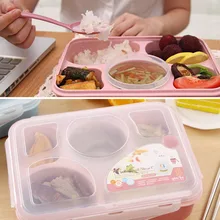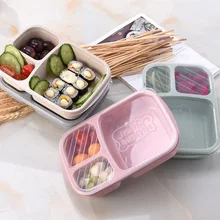Packing a lunch box for outdoor activities requires a little bit of extra planning and preparation. You want to make sure that the food is easy to carry, won’t spoil easily, and is still delicious and satisfying. Here are some tips on how to pack a lunch box for outdoor activities.
Choose the Right Container
The first step in packing a lunch box for outdoor activities is choosing the right container. Look for a container that is lightweight, durable, and easy to carry. A cooler bag or backpack is great for keeping food cool and fresh.
Pack Non-Perishable Foods
Pack foods that won’t spoil easily, like nuts, trail mix, energy bars, and dried fruit. These items are easy to carry and won’t require refrigeration, making them perfect for outdoor activities.
Bring a Cooler or Ice Packs
If you’re packing perishable items like sandwiches or salads, make sure to bring along a cooler or ice packs to keep them cool and fresh. This is especially important if you’re going to be outdoors for an extended period.
Avoid Messy Foods
Avoid packing foods that are messy or difficult to eat on the go, like soup or spaghetti. Instead, opt for finger foods or items that can be eaten with a fork or spoon, like sandwiches, wraps, or salads.
Pack Plenty of Water
Staying hydrated is essential when you’re outdoors. Make sure to pack plenty of water or other hydrating beverages to keep you hydrated throughout the day.

Bring Utensils and Napkins
Don’t forget to pack utensils and napkins. Bring along disposable utensils and napkins or reusable ones that can be washed and reused.
Pack Food in Sealed Containers
Pack food in sealed containers to prevent spills and keep them fresh. This is especially important if you’re going to be hiking or doing other activities that require a lot of movement.
Bring a Trash Bag
Bring along a trash bag to collect any wrappers or other trash that you generate while you’re outdoors. This will help keep the area clean and make it easier to pack up and leave when you’re finished.
Packing a lunch box for outdoor activities requires some extra planning and preparation, but it’s worth it to have a delicious and satisfying meal while you’re enjoying the great outdoors. By following these tips, you can pack a lunch box that is easy to carry, won’t spoil easily, and is still delicious and satisfying.
Tips for packing a waste-free lunch box
Packing a waste-free lunch box is an important step in reducing our environmental impact and promoting sustainability. Here are some tips for packing a lunch box that produces little to no waste.
Use Reusable Containers
Invest in reusable containers, like bento boxes or glass jars, to pack your lunch. Avoid using disposable plastic or paper bags, which create unnecessary waste. You can also use reusable silicone bags or beeswax wraps to store your food.
Pack a Cloth Napkin
Instead of using disposable paper napkins, pack a cloth napkin that can be washed and reused. This will not only reduce waste but also add a touch of elegance to your lunch.

Bring Reusable Utensils
Pack a set of reusable utensils, like a fork, spoon, and knife, instead of using disposable plastic ones. Look for utensils that come in a carrying case, so you can easily pack them in your lunch box.
Avoid Single-Serve Items
Single-serve items, like snack packs or juice boxes, generate a lot of waste. Instead, buy items in bulk and pack them in reusable containers. You can also make your own snacks, like granola bars or trail mix, and store them in reusable bags or containers.
Pack a Reusable Water Bottle
Instead of buying bottled water or other beverages, pack a reusable water bottle that you can refill throughout the day. Look for bottles that are made of stainless steel or glass and are BPA-free.
Compost Food Scraps
If you have access to a compost bin, pack any food scraps, like fruit peels or vegetable trimmings, in a compostable bag and dispose of them in the bin.
Bring a Reusable Bag
If you’re bringing groceries or other items with you, pack them in a reusable bag instead of using disposable plastic bags. This will reduce waste and help you carry your items more easily.
Choose Sustainable Packaging
If you must use packaged items, look for products that come in sustainable packaging, like cardboard or glass. Avoid items that come in excessive packaging or are made of non-recyclable materials.
In conclusion, packing a waste-free lunch box is a simple and effective way to reduce our environmental impact and promote sustainability. By using reusable containers, utensils, and bags, avoiding single-serve items, and composting food scraps, we can make a difference in our daily lives.